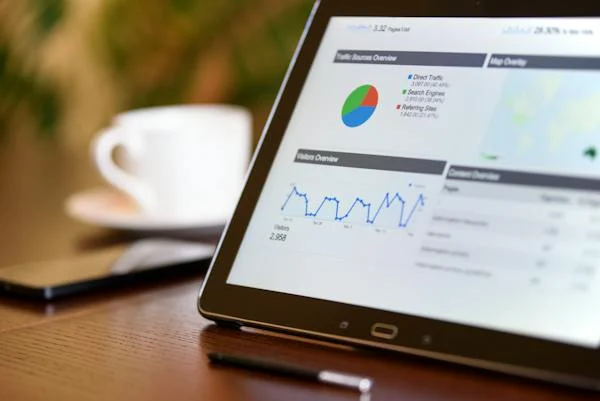Crafting Nonprofit Stories
Storytelling in the nonprofit world is like magic; it’s what makes the mission leap off the page and into the hearts of folks willing to help out. It’s not just about what you’re doing; it’s about getting those who can help to feel it in their bones.
Storytelling Ingredients
A great nonprofit story has a few simple ingredients:
- Main Character: Whether it’s someone who’s benefited, a volunteer, or maybe the founder, the story’s heart beats to their journey. How has your group been their hero, riding in to save the day or at least help with the heavy lifting?
- A Good Plot: Since the Stone Age, folks have loved a tale that kicks off with a problem, takes you through the hustle to fix it, and wraps up with hope or triumph.
- Eye Candy: Pictures and videos stir emotions and put a face to your mission. Just ask anyone who’s ever been glued to a screen—it works like a charm.
In 2023, almost everyone (91%, to be exact) wants more videos from groups like yours. It’s the way to take your tale from flat to fabulous. Whether it’s scribbles on a page, images, or videos, each bit should inform, enlighten, and tug at the audience’s heartstrings (Anedot).
To link your stories to your cause, it’s key to show how helping you means even more stories get to be told (Anedot).
Mapping and Rolling Out
Crafting a storytelling plan involves a few handy steps:
- Pin Down Main Points: Figure out what big picture ideas your group wants to push through every story.
- Sketch the Story’s Bones: Map out your character’s challenges, how your group saunters into the picture, and how things change.
- Pick Your Platform: Whether it’s a blog, a snappy video, or a cool infographic, tailor it to what your crowd likes best.
- Get ‘Em Involved: Try throwing in some questions or even a quick poll to get the crowd chatting and sharing their thoughts.
- Broadcast Your Tale: Social media, email, and good old fashion websites—wherever folks will see it, get it there. For some dope intel on how to engage through emails, don’t miss our tips on nonprofit email marketing best practices.
By adding these tricks to your storytelling tool belt, your organization can whip up tales that shout for attention and perhaps spark a helping hand. For even more wisdom on making your nonprofit marketing shine, check out our thoughts on digital marketing for nonprofit organizations and nonprofit social media marketing.
Importance of Nonprofit KPIs
KPIs, or Key Performance Indicators if you’re feeling fancy, help nonprofits see how they’re doing and tweak their strategies for better results. We’re talkin’ online donations, volunteer sign-ups, and marketing spends. Keeping an eye on these numbers can steer nonprofits towards boosting donor love and smash-hit fundraising feats.
Tracking Online Donations
Keep tabs on online donations to figure out how the dough’s rolling in. With this KPI, nonprofits can check if donations are growing and get a sense of fiscal fitness. Crunching these digits shows patterns and proves whether the fundraising game is solid or needs a game change.
| Time Period | Total Donations ($) | Growth Rate (%) |
|---|---|---|
| Q1 2022 | 10,000 | – |
| Q2 2022 | 12,000 | 20% |
| Q3 2022 | 15,000 | 25% |
| Q4 2022 | 18,000 | 20% |
For tips on smart fundraising, hop over to nonprofit fundraising campaigns.
Monitoring Volunteer Sign-ups
Volunteer sign-ups are another key metric. By tracking these, nonprofits can see if more folks are getting on board and if those engagement goals are on point. Higher sign-up numbers can tweak outreach tactics to boost community action.
| Time Period | Total Volunteer Sign-ups | Percentage Change (%) |
|---|---|---|
| January 2022 | 50 | – |
| February 2022 | 75 | 50% |
| March 2022 | 100 | 33.3% |
| April 2022 | 125 | 25% |
Looking to bump up volunteer buzz? Check our piece on nonprofit social media marketing.
Assessing Marketing Spend
Checking the marketing cash flow is crucial—how much dough did it take to bag a donation or a volunteer sign-up? This KPI shows how nonprofits are shelling out for each conversion and gives the lowdown on ROI. This helps fine-tune where to put the marketing moolah for the best bang.
| Marketing Channel | Spend ($) | Conversions | Cost Per Conversion ($) |
|---|---|---|---|
| Social Media | 1,000 | 50 | 20 |
| Email Marketing | 500 | 40 | 12.50 |
| SEO | 700 | 30 | 23.33 |
Improve your marketing moves with our guide on digital marketing for nonprofit organizations.
Keeping tabs on these key KPIs gives nonprofits the insight they need to shift gears and pull off a bigger impact in their communities.
Key Digital Marketing KPIs
Nonprofits aiming to boost donor engagement and drive those fundraising goals home can benefit big time from keeping an eye on the right key performance indicators (KPIs). When organizations get a grip on these numbers, they can judge their own marketing moves and make tweaks when things aren’t going to plan.
Website Traffic Analysis
Keeping tabs on your website traffic is like having a sneak peek into how your online presence is being felt. Numbers aren’t just digits; they tell you how many individuals are dropping by your site, how many pages they’re checking out, and how long they’re sticking around. All this jazz can show nonprofits what’s workin’ and what’s not, guiding them on which content to feed their audience.
| Metric | Description | Importance |
|---|---|---|
| Unique Visitors | Count of different people popping by the site | Measures your reach and visibility |
| Page Views | Sum of all pages folks are viewing | Indicates they’re interested and engaged |
| Average Session Duration | How long they’re hanging out on the site | Tells you if your content’s hitting the spot |
Moreover, figuring out where your visitors are coming from is like striking gold. Knowing if they enter through search engines, social sites, or direct links can help tailor nonprofit ambitions and give a generous push to their outreach activities. Digital marketing for nonprofits sure can fuel the mission.
Conversions by Referral Channel
Keeping score of conversions by referral channel? That’s where the magic happens for nonprofits. This number crunching uncorks where donations, volunteer sign-ups, and other goodies roll in from. Nonprofits can then shuffle resources to keep these streams mighty productive.
| Referral Channel | Number of Conversions | Conversion Rate (%) |
|---|---|---|
| Social Media | 150 | 3.5 |
| 300 | 5.0 | |
| Direct Traffic | 200 | 4.0 |
| Organic Search | 100 | 2.0 |
Seeing this data is like unlocking a treasure chest of decisions. If social media’s not pulling its weight, it might be high time to switch gears—maybe consider a sprinkle of nonprofit influencer marketing.
By keeping KPIs in the loop, nonprofits can measure the pulse of their fundraising efforts, ensuring they’re all set to reel in even more donors and engage those superstar volunteers.
Leveraging Corporate Sponsorships
Corporate sponsorships can provide a huge boost to nonprofit marketing. By working with businesses, nonprofits can nab financial support, extra resources, and get the word out there—benefitting both sides. Now, we’ll break down what sets sponsorships apart from partnerships, and share some handy tips for snagging impactful sponsorships.
Sponsorship vs. Partnership
Nailing down the distinction between corporate sponsorships and partnerships is key for nonprofits.
| Aspect | Sponsorship | Partnership |
|---|---|---|
| Duration | Short-term (think events) | Longer, ongoing relationship |
| Goals | Get seen, improve brand image for both | Team up for shared goals |
| Activities | Specific events or campaigns | Broad collaborations and joint efforts |
| Commitment Level | Cash or resources often centered around an event | Shared tasks and tools |
Corporate sponsorships usually involve short-term deals where sponsors offer bucks or resources for certain events or projects, trading for visibility and a better brand image. On the flip side, partnerships focus on a more ongoing, mutual arrangement, working on shared goals like product development or tech swaps.
Successful Sponsorship Strategies
To nail down corporate sponsorships, nonprofits should be strategic. Here’s how:
Identify Aligned Partners: Nonprofits need to do their homework, finding sponsors whose mission jives with their own. This connection boosts authenticity and the partnership’s engagement.
Prepare a Professional Pitch: A solid pitch is essential. It should spell out the sponsorship chances, what’s in it for the company, and how it impacts the nonprofit’s goals.
Customize the Approach: Personalizing the pitch for each sponsor stokes interest. Point out how the sponsorship aligns with their marketing and social responsibility goals.
Follow Up: After reaching out, keep the conversation going. It shows determination and real interest, bumping up the likelihood of sealing the deal.
Provide Value Through Sponsorship Levels: Offering different sponsorship levels caters to various budgets while getting more folks onboard, giving sponsors choices for what they can invest.
Track Progress: Keeping tabs on how well the sponsorship performs is vital to both sides. By recording results, nonprofits can show the sponsor the payoffs and mutual perks.
Take Mountain Dew’s big $1 million donation to Team Rubicon—not only did it flood them with funds, but it also helped them tap into fresh audiences. Jack Link’s support in data collection efforts also shows how corporate sponsorships can boost a nonprofit’s brand and attract support for educational initiatives.
Using these game plans, nonprofits can effectively tap into corporate sponsorships, ramping up their reach and fundraising steam. For more tips, take a peep at related topics like nonprofit social media marketing and nonprofit fundraising campaigns.
Social Media Strategies for Nonprofits
Nonprofits can really up their game on social media, pulling more people into their circle and getting them involved in their cause. Here we dive into the importance of sorting out clear goals and creating content that’s not only engaging but also mirrors what the organization stands for.
Setting Social Media Goals
Before jumping in, nailing down what you want to get out of social media is super important. Nonprofits should set up clear goals for each platform. Are you looking to get more eyes on your website, rally up some donations, or recruit more helping hands? Platforms like LinkedIn offer a treasure trove of insights (LinkedIn Nonprofit Blog).
| Goal | How to Measure Success |
|---|---|
| Get More Website Traffic | % Increase in site visitors from social media |
| Boost Donations | Total donations brought in through social channels |
| Recruit More Volunteers | Number of newbies signing up via social media |
Keeping an eye on these numbers helps nonprofits make sure their online chatter aligns with their main aims.
Content Creation and Engagement
Putting together content that gets a reaction is where the magic happens. Nonprofits should aim to share updates, stats, and relatable stories that pull on heartstrings. A consistent look across your posts helps people recognize you right away, and connecting your content back to your goals makes people more likely to double-tap or share (LinkedIn Nonprofit Blog).
For a strong connection, nonprofits should:
- Chat regularly with followers to form solid relationships.
- Tag others and come up with catchy hashtags.
- Dive into events like Q&As or info sessions on platforms such as LinkedIn.
Checking out how posts are performing helps nonprofits tweak and adjust what they’re putting out there. This way, they can keep hitting the mark with what their audience wants (Double the Donation).
With a solid social media plan, nonprofits can pull in and keep their audience’s attention. To dig deeper, take a look at our nonprofit social media marketing guide and see how others have aced it in our nonprofit marketing case studies.
Enhancing Nonprofit Impact
Nonprofits gotta keep finding fresh ideas to make a bigger splash in what they do, and two reliable ways to do that include tapping into the Google Ad Grants Program and sprucing up search engine visibility.
Google Ad Grants Program
The Google Ad Grants Program gives out $10,000 a month in Google advertising credits to nonprofits that qualify. This is a game-changer, letting folks shout loud about their work, share some knowledge, and get the community more involved, all through Google Ads. Using buzzwords that cut right to what they’re about, nonprofits can widen their reach and pull in more potential donors.
| Feature | Details |
|---|---|
| Monthly Ad Credits | $10,000 |
| Ad Types | Text ads pushing mission-related content |
| Benefits | Boosts visibility and drives eyeballs to nonprofit resources |
But hey, there’s a catch; you have to meet certain rules to keep those credits coming. Get your campaigns on the right track and you can really make those ad bucks pop, becoming a big part of a solid nonprofit marketing plan template.
Search Engine Optimization Benefits
Search engine optimization, SEO if you wanna get fancy, lets nonprofits tune up their online presence, making them easier to find in Google-land. By focusing on just the right keywords, they’ll pop up for folks hunting for their services or other topics they care about (Double the Donation). This way, more folks will find their way to a nonprofit’s corner of the internet without breaking the bank on ads.
| SEO Strategy | Purpose |
|---|---|
| Keyword Research | Pinpoints words linked to nonprofit’s mission |
| Content Optimization | Polishes website content to match search queries |
| Link Building | Builds website street cred via quality backlinks |
When done right, SEO doesn’t just send traffic your way, but it gets folks vibing with the content there, turning clicks into real interest and sometimes, supporters. This approach can slot right into bigger nonprofit fundraising campaigns and help nonprofits stand out to everyone from donors to volunteers.
By making the most of Google Ad Grants and good SEO, nonprofits don’t just boost their efforts; they supercharge them, meshing with today’s nonprofit marketing strategies. It’s about making every move count in reaching and engaging more potential friends and backers.
Nonprofit Marketing Essentials
Nonprofits need more than passion to keep the lights on—they gotta spread the word like butter on toast. Let’s dive into the essentials of rallying your troops and boosting those donations, focusing on two big ones: getting to know your squad and working that email magic.
Figuring Out Who’s Who
Know who you’re talking to: that’s rule number one in nonprofit marketing. You’ve gotta put faces to your fan base—who they are, what makes them tick, and how they fit into your mission. You’re dealing with a mixed bag of folks—supporters, helpers, and anyone who throws you a bone now and then. Each group speaks a different language, so you better get fluent if you want them on your side.
Here’s a quick breakdown of the usual suspects:
| Audience Type | Who They Are |
|---|---|
| Constituents | The folks who benefit directly from your work. Their stories can shout your cause from the rooftops. |
| Customers | They’re picking up what you’re putting down, whether it’s buying or fundraising. |
| Volunteers | The unsung heroes hustling alongside you. They’ve got decibels of enthusiasm to spare. |
| Donors | Champions waving their wallets in your direction. Keep ’em sweet for steady cash flow. |
Knowing your crowd helps you speak their lingo and keep them interested.
Nailing That Email Game
Email isn’t just for confirmations and receipts. It’s your ticket to a steady gig in people’s inboxes. And guess what? Nonprofits have mastered the art of turning those pixels into passion. Craft emails that hit the right notes—personal narrative, automation magic—with precision to bump up that mailing list, donations, and loyal supporters.
Check out these simple hacks for email mastery:
| Best Practice | What It’s All About |
|---|---|
| Segment Audiences | Sort your contacts like you’re decluttering a closet—interests, behaviors, the works. Tailored messages hit harder. |
| Personalized Content | Use their names, remember what they liked—or didn’t—and talk to them like you mean it. |
| Automated Campaigns | Set up your tech to do the legwork, whether it’s welcome notes, cash calls, or party invites. |
| Clear Calls-to-Action | Don’t beat around the bush. Tell them what you need—donations, time, whatever. Make it snappy. |
Get these moves down, and your supporters won’t just be clicking—they’ll be high-fiving you from afar. Need more email mojo? Scope out our guide on nonprofit email marketing best practices.
Effective Event Marketing
Event marketing can do wonders for nonprofits aiming to spread the word, mingle with their peeps, rake in the cash, and rally support. This part’s all about getting the word out and raking in the dough through events, plus building connections with the community through shin-digs.
Awareness and Fundraising Events
For nonprofits, awareness and fundraising events are like the bread and butter to broadcast their missions and cash in on the support. Picture organizing a 5K fun run, which can get folks moving and chatting, all while shining a spotlight on the nonprofit’s purpose. It’s a neat way to attract folks ready to pitch in, as seen in many a success story.
Nonprofits go all-in to make sure these gigs hit the mark. Check out the table below for what makes awareness and fundraising events tick:
| Component | Description |
|---|---|
| Goal | Set clear aims for the shindig, like hitting a fundraising target or spreading the word. |
| Target Audience | Find and click with the folks who vibe with the nonprofit’s message. |
| Promotion | Create buzz with social media or dive into nonprofit email marketing best practices. |
| Partnerships | Team up with local businesses or outfits for gear and backing. |
| Follow-Up | Keep the convo going post-event to keep the spark alive and encourage steady backing. |
Take a cue from Sainsbury’s teaming up with Comic Relief – they’ve raked in over £130 million in two decades, a serious boost to the charity’s goals (Breezy).
Community Connection through Events
Getting tight with the community is a home run for nonprofits aiming to build a lasting bond. Events offer a prime chance for face-to-face meet-ups, letting organizations spell out their missions directly. A good example is the “Small Talk Saves Lives” gig by Network Rail and Samaritans, which schooled over 20,000 rail staff in suicide prevention and pushed for meaningful chats (Breezy).
Engaging local folks through events isn’t just about dollars but also about building bridges. Here are a few solid methods to boost community ties:
| Strategy | Description |
|---|---|
| Create Interactive Experiences | Reel folks in with workshops, demos, or chances to pitch in as volunteers. |
| Share Success Stories | Shine a light on what donations and volunteer work have accomplished, building trust and support. |
| Involve Local Leaders | Rope in local bigwigs or influencers to join the fun, expanding reach and sealing credibility. |
Nonprofit marketing magic happens when events make individuals feel a connection to their causes and inspire them to stick around. To dive deeper into nonprofit fundraising campaigns and nonprofit social media marketing, check out other reads that dig deep into these powerful strategies.




















